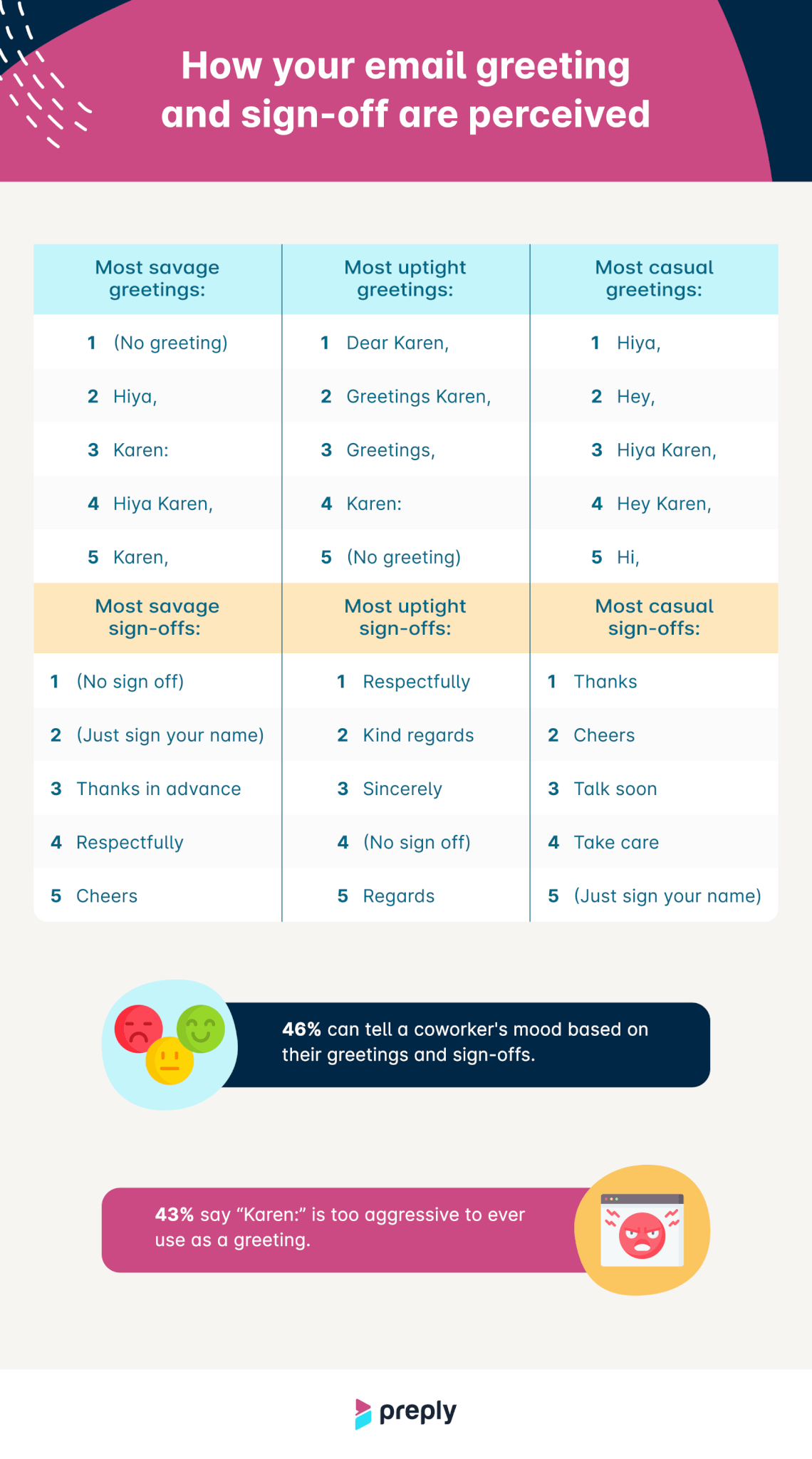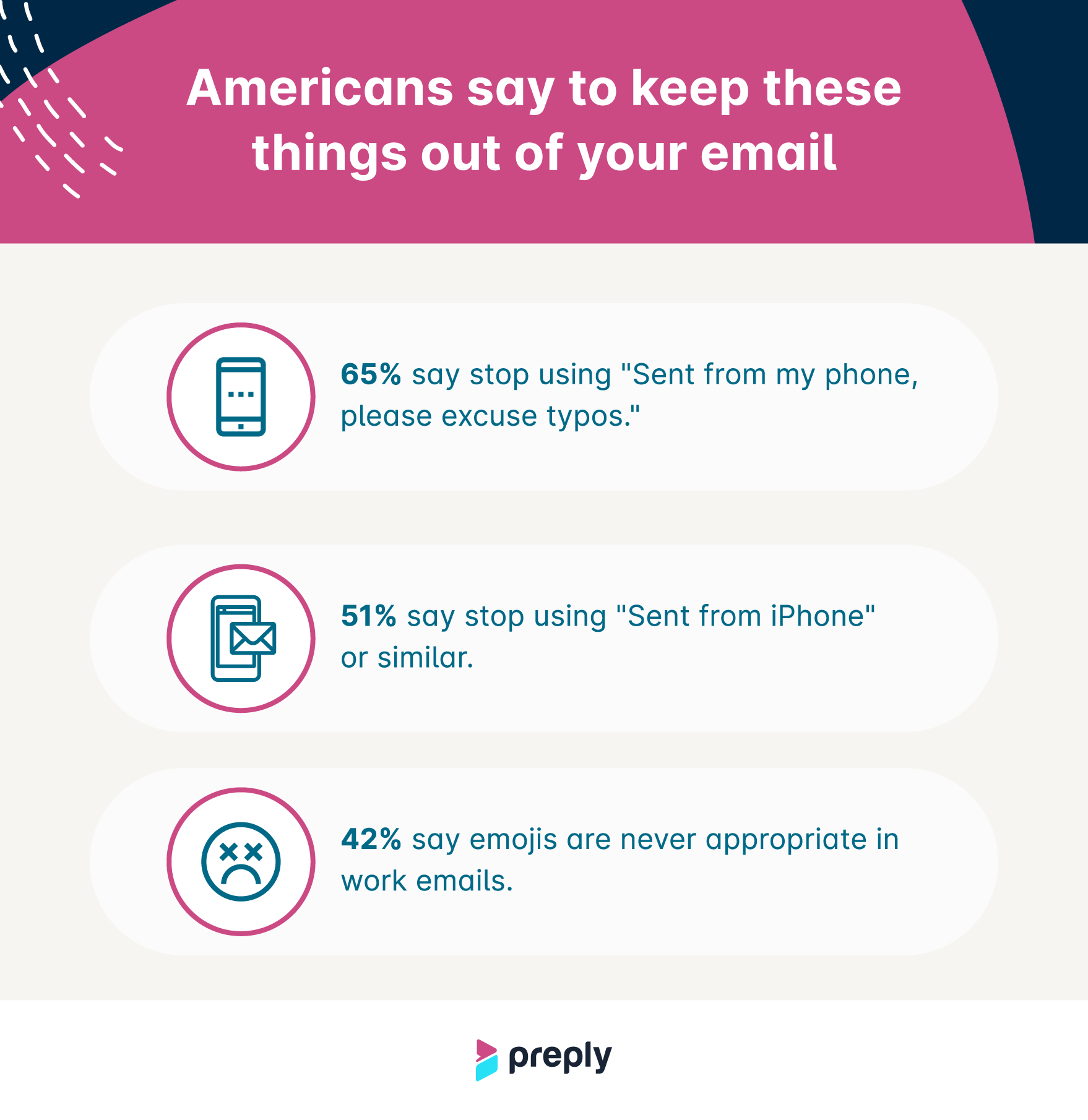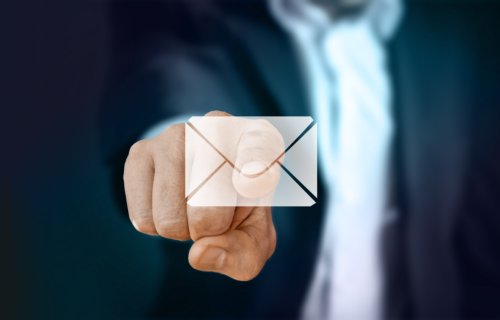What shows up in our email inboxes is its own language. Do you think your coworkers actually walk around saying things like, “circle back” and “kind regards” in their every day? Behind the facade of corporate jargon, deciphering the true tone of a message can be tricky.
The survey of 1,005 American adults by Preply digs deeper into how people feel about a variety of greetings and signoffs arriving in their inbox daily. Almost half (46%) of survey respondents said how their coworkers begin and end an email reveals their mood.
Sometimes, hidden behind remaining professional, emails from coworkers are passive aggressive. An overwhelming majority of respondents (91%) share this sentiment.
Are your colleagues being passive aggressive in emails?
According to the study, if you really want to stick it to your colleagues, the most “savage” way to do so is to not say anything at all. Leaving out a greeting or signoff burns in the world of workplace email. Although 47 percent sign off with just their name, this is seen as the second most savage way to end an email, followed by “thanks in advance.”
Giving way to your frustration in the art of passive aggression is much more common among younger generations. While only 37 percent of people change their usual email jargon when feeling annoyed, Gen Z is the most likely to tweak their email language in these situations.
Most of the people surveyed (76%) say the greeting is more important than how you bid adieu. That being said, around two-thirds of participants (67%) don’t even give greetings and signoffs any thought. After the initial email, most people think salutations should disappear either immediately (32%) or gradually (27%) as the email thread continues.

Say you have a colleague named Karen. On an average day at the office, the most-used e-greeting is “Hi Karen” (67%) followed by the slightly more embellished “Good morning/afternoon/evening Karen” (54%). “Thank you” often ends the majority of Americans’ emails (80%). The more informal “thanks” was second (71%) tied with those who sometimes use exclamations to sign off, while 29% never do.
The modern email scape has evolved from old classics like “Dear Karen,” “Respectfully” and “Kind regards.” These are now seen as uptight options. On the other hand, the most casual include “hiya,” “hey,” “thanks,” “cheers,” and “talk soon.”
How to be appropriate with work emails
There are certainly faux pas in the way of corporate communication. Sixty-five percent of people want everyone to do away with using “Sent from my phone, please excuse typos”.
What about emojis? The results show these shouldn’t be a staple in your everyday drafts. Forty-two percent say emojis are never appropriate in work emails, but 58 percent think they are sometimes okay.
Something else to be wary about is exclamation points. Forty-eight percent tend to re-read their message to remove them, while 25 percent do so to add them.
Overall, study respondents wish they could sound more confident (36%) or more formal (28%) in emails. Two in five women strive for a more confident tone which makes sense why men (25%) are more likely than women (16%) to aim for a casual tone.

Methodology
On December 9, 2022, we surveyed 1,005 Americans about their habits and thoughts on greetings and sign-offs in an email. Respondents ranged in age from 18 to 76 years old, and were 49% female, 49% male and 2% non-binary.
